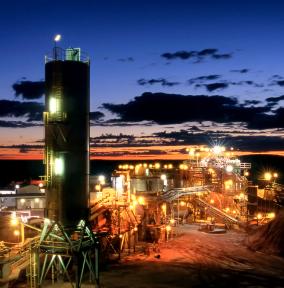Meetings with key oil producers reinforce PM Capital’s view on energy stocks
More evidence of constraints in capital expenditure on new oil supply.
By Andrew Russell, PM Capital
Key points
- PM Capital’s recent meetings in Houston with major global oil producers confirm our view that the energy supercycle remains firmly intact.
- New oil supply will remain constrained this decade due to underinvestment in fossil-fuel projects.
- Oil demand should continue to grow for most of this decade, despite faster uptake of renewables technologies.
Introduction
By sector, energy is the second-largest weighting in PM Capital’s Global Companies Fund at 15% after initiating positions in energy stocks in 2020. At the time, oil demand had plunged as governments worldwide shuttered their economies due to the COVID-19 pandemic. An oil price war between the two largest OPEC producers also added negative sentiment towards oil.
This energy-sector volatility created opportunity. In addition, the oil sector was experiencing underinvestment in new projects that would constrain new supply - and support the oil price. This was in part driven by a greater focus on Environmental, Social and Governance (ESG) factors by institutional investors and lenders resulting in less capital being allocated to traditional oil and gas companies, and more to renewables.
After plunging in the first quarter of 2020, global energy stocks rallied over the next few years. The MSCI World Energy Index (USD), had an annualised gross return of 30.9% over three years to end-November 2023.
Adding energy exposure when the sector was badly oversold in 2020 has been a rewarding position for our Global Companies Fund and Australian Companies Fund.
Our view remains that the energy sector is in a long-term supercycle. Within that uptrend, we expect continual bouts of short-term volatility in oil prices and energy stock valuations, amid heightened geopolitical risk and macro-economic uncertainty, and as OPEC countries increase their share of global oil production.
For long-term investors, the challenge is to look through short-term volatility in the oil price, like what we are currently experiencing, and consider the energy sector’s fundamentals this decade and beyond. That requires assessing oil supply and demand trends.
1. Houston visit confirms our view on oil supply
Local and international company visits are an important part of our investment process. Meetings with leading oil companies help PM Capital develop industry insights, test our views on companies and sectors, and add value to our portfolio for clients.
In late 2023, we met with representatives from seven of the world’s ten largest listed oil companies in Houston, with our meetings representing approximately 30% of global oil production.
Several themes emerged from our meetings. First was their ongoing investment discipline. It’s clear that key oil companies continue to favour value over volume. They are taking a more conservative approach to new oil and gas projects, focusing only on higher returning oil & gas projects while narrowing their focus on lower yielding renewable projects.
Second, energy companies are more focused on using technology to boost productivity at their projects. Even traditional energy companies are benefitting from artificial intelligence! Rather than lift the number of oil rigs or invest more in upstream projects, oil producers we spoke to want to produce the same number of barrels for the same levels of capital expenditure, using technology-led productivity improvements that also help to offset the effect of higher inflation and operating costs.
The third theme from our meetings was a lessening of market focus on ESG factors in energy investment. ESG remains important, but there is growing market recognition of ESG initiatives by key oil companies, and also that the world will need more oil and gas for a long time to come, as it transitions to renewables.
These themes combined support our view of higher free cash flow and a continued focus by corporates to return more of this cash flow to shareholders through buybacks and dividends. The days of oil companies pouring most of their profits back into new fossil-fuel projects and discoveries are fading.
Our investment in Shell is premised on closing the valuation discount versus their US-listed peers, such as Exxon. Investors are no longer valuing traditional energy stocks based on their discounted cash flows, rather on the discounted value of their distribution stream back to investors. After significantly cutting the dividend in 2020 during the pandemic, we see Shell as having significant scope to boost distributions and close the valuation gap versus peers.
2. Longer-term supply constraints
Investment in new fossil-fuel projects will remain challenging, particularly for oil companies in non-OPEC countries (such as the US, Canada and Australia). In addition, tier-1 assets are rapidly depleting.
Stakeholder opposition to new fossil-fuel projects is building on several fronts. Activist investors continue to challenge oil and gas companies. In December 2023, a group of activist investors tabled a resolution urging the world’s largest energy companies to set climate targets for 2030.
Governments continue to increase pressure on energy companies. In May 2021, the Hague District Court in The Netherlands ordered Shell to reduce its worldwide carbon-dioxide emissions by 45% to 2030 (compared to 2019 levels).
All this points to Western oil and gas companies under growing pressure to curtail investment in new oil and gas projects – and allocate more capital to renewable energy projects.
The result could be constrained oil supply from Western companies in non-OPEC countries this decade and more supply from producers in OPEC, which represents energy companies in the Middle East, Africa and parts of Asia.
Longer term, oil supply could be concentrated in the hands of fewer OPEC oil producers – a scenario that could lead to higher volatility in the energy sector.
3. Growth in per-capita oil demand
Per-capita usage is the key driver of long-term oil demand. Although people will consume more energy from renewable sources this decade, oil consumption on a per-capita basis (the average per person) remains ‘sticky’.
This is primarily due to economic development in emerging countries which continue to grow and urbanise, and continued reliance on fossil fuels in Western countries as their economies decarbonise over coming decades.
Simply, more people will need to consume more oil and gas this decade as populations grow and economies expand.
However, growth in global oil demand will eventually slow as the world continues to transition to renewables. But that slowdown is still a long way off. The International Energy Agency (IEA) this year forecast growth in global oil demand will rise by 6% from 2022 to 2028, reaching 105.7 million barrels a day.
Petrochemical and aviation oil demand will remain robust. But the IEA expects oil demand from the transport sector will begin to decline after 2026 due to the uptake of electric vehicles, growth in biofuel useage and improving fuel economy in vehicles. The IEA notes that a peak in oil demand is in sight, but it might not occur until late this decade.
It’s too soon to know how quickly – or by how much - growth in oil demand will ease as the clean-energy economy picks up pace. What is clear is that global oil demand will continue to rise in the medium term.
Conclusion
Our meetings with global oil producers in Houston provided valuable insights to our oil-sector research. The meetings confirmed our view that investment in new oil projects will remain constrained this decade.
Valuation is paramount. Investing in quality oil companies when they trade at bottom-quartile valuations is the key to mitigating investment risks and ensuring energy stock positions can withstand short-term market and sector volatility.
Equally important is being prepared to hold energy stocks through the cycle, to maximise profits. That is PM Capital’s approach, having invested in undervalued energy companies that are well-positioned to benefit from favourable oil supply/demand fundamentals this decade.
About the author
Andrew Russell is a Senior Analyst and Portfolio Manager within the PM Capital global equities team. PM Capital is a leading asset manager in Australian and global equities, and interest rate securities. More PM Capital Insights are available here.
Notes
1At end-December 2023.
2MSCI World Index AUD Factsheet. At 30 November 2023.
3Reuters .”Investors Ramp Up Pressure on Big Oil Firms to set 2030 Climate Targets”. 15 December 2023. https://www.reuters.com/business/sustainable-business/investors-ramp-up…
4Boffey, D. (2021), “Court orders Royal Dutch Shell to cut carbon emissions by 45% by 2030.” The Guardian. 27 May 2021. https://www.theguardian.com/business/2021/may/26/court-orders-royal-dutch-shell-to-cut-carbon-emissions-by-45-by-2030
5International Energy Agency (2023). “Growth in global oil demand is set to slow significantly by 2028.” 14 June 2023. www.iea.org/news/growth-in-global-oil-demand-is-set-to-slow-significantly-by-2028.
This Insight is issued by PM Capital Limited ABN 69 083 644 731 AFSL 230222 as responsible entity for the PM Capital Global Companies Fund (ARSN 092 434 618), the "Fund". It contains summary information only to provide an insight into how we make our investment decisions. This information does not constitute advice or a recommendation, and is subject to change without notice. It does not take into account the objectives, financial situation or needs of any investor which should be considered before investing. Investors should consider the Target Market Determinations and the current Product Disclosure Statement (which are available from us), and obtain their own financial advice, prior to making an investment. The PDS explains how the Fund's Net Asset Value are calculated. Past performance is not a reliable guide to future performance and the capital and income of any investment may go down as well as up.




